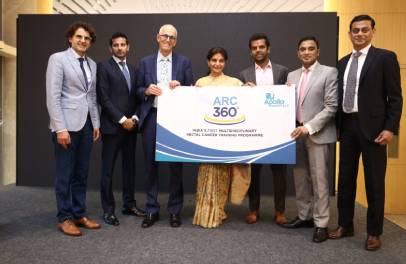Heart Transplant-A Journey Not a Procedure.

Heart transplants no more part of science fiction fantasies. They are a clear reality in the current medical landscape. A heart transplant involves replacing a diseased heart with a donor’s healthy heart, especially in case of a heart failure. Heart failure can be diagnosed by an Echocardiogram which measures the Ejection Fraction (EF) and by the rise of NT-pro BNP hormone in the blood as a response to the failing heart.
In case of severe heart failure, the patient may need a heart transplant. The patient is added in the government’s waiting list that is maintained for recipients awaiting Solid Organ Transplantation and the organ is offered according to the waitlist priority.
The outcome of a transplant is determined by many activities undertaken by the team before and after the transplant and not just by the surgery alone.
Donor assessment and Recipient preparation
The brain dead donor is evaluated by a series of echocardiographic, hemodynamic, hormonal, bronchoscopic and infectious disease parameters, to assess the quality and safety of transplanting the organ onto a recipient. Donor resuscitation is also carried out to improve the quality of the organ and transplant outcome, by a set of advanced therapeutic protocols administered to the brain dead donor.
The recipient is also intensively assessed and kept in readiness for the impending transplant. Mechanical circulatory support devices like the ECMO and VAD are used for circulation in critically ill patients, until the new organ becomes available.
Heart Transplant Surgery
Once a donor becomes available, the heart is removed, cooled and stored in a special solution and the transplantation is performed at the earliest. During the surgery, the patient is placed on the heart- lung machine that allows the body to receive vital oxygen and nutrients from the blood even though the heart is being operated. The patient’s heart is removed except for the back walls of the atria of the heart’s upper chambers. The back of the donor heart is opened at the left upper chamber which is connected to the corresponding remnant of the recipient. The 2 large veins of the right side (venae cavae), are connected independently. The blood vessels are then connected, allowing blood to flow through the heart and lungs. It is a complex procedure that lasts for about 4 to 8 hours.
Post heart transplant protocols
A cutting edge transplant centre has a surveillance system which meticulously follows up to prevent complications, such as infections, hormone imbalances causing diabetes and osteoporosis. Acute rejection is assessed by Endomyocardial biopsy and chronic rejection by an innovative Optical Coherence Tomogram, an investigation available only in few of the centres worldwide.
A heart transplant is not just a surgery but also a long and complex process starting with heart failure management, pre transplant measures to assure the best results and a journey of compassionate and vigilant post transplant surveillance.
UPDATED ON 03/09/2024
Apollo Highlights & Updates
 Apollo Hospitals takes up a 4.5-Hour Stroke Treatment Promise with Advanced Stroke Care Network with Extended 24-Hour Tr...
Apollo Hospitals takes up a 4.5-Hour Stroke Treatment Promise with Advanced Stroke Care Network with Extended 24-Hour Tr...© Copyright 2024. Apollo Hospitals Group. All Rights Reserved.
 +91 8069991061
Book Health Check-up
+91 8069991061
Book Health Check-up








